
Thomas Kennerly Wolfe Jr. was an American author and journalist widely known for his association with New Journalism, a style of news writing and journalism developed in the 1960s and 1970s that incorporated literary techniques. Much of Wolfe's work was satirical and centred on the counterculture of the 1960s and issues related to class, social status, and the lifestyles of the economic and intellectual elites of New York City.

Seabiscuit is a 2003 American sports film co-produced, written and directed by Gary Ross and based on the best-selling 1999 non-fiction book Seabiscuit: An American Legend by Laura Hillenbrand. The film is loosely based on the life and racing career of Seabiscuit, an undersized and overlooked Thoroughbred race horse, whose unexpected successes made him a hugely popular media sensation in the United States during the Great Depression. At the 76th Academy Awards, Seabiscuit received seven nominations, including Best Picture, but ultimately lost all seven, including six to The Lord of the Rings: The Return of the King.
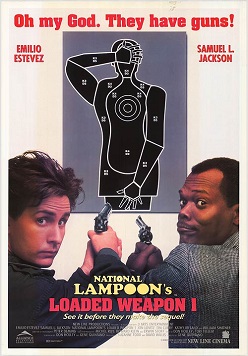
National Lampoon's Loaded Weapon 1 is a 1993 American parody film directed and co-written by Gene Quintano, and starring Emilio Estevez, Samuel L. Jackson, Kathy Ireland, Frank McRae, Tim Curry and William Shatner. The film mainly spoofs the first three Lethal Weapon films, as well as several others including Basic Instinct, Commando, Die Hard, Dirty Harry, Rambo, The Silence of the Lambs, Wayne's World, 48 Hrs. and TV series such as CHiPs. Loaded Weapon 1 was released on February 5, 1993.

3: The Dale Earnhardt Story is a 2004 American biographical drama television film directed by Russell Mulcahy, written by Robert Eisele, and starring Barry Pepper as NASCAR driver Dale Earnhardt. It chronicles Earnhardt's life from his humble upbringing in Kannapolis, North Carolina, throughout his career racing automobiles to include his rise to dominance in NASCAR, culminating with his death in the final lap of the 2001 Daytona 500. Its central theme focuses on the relationship between him and his father, Ralph Earnhardt, as well as the relationship between him and his youngest son, Dale Earnhardt Jr.

Robert Glenn Johnson Jr. , better known as Junior Johnson, was an American professional stock car racing driver, engineer, and team owner as well as an entrepreneur. He won 50 NASCAR races in his career before retiring in 1966. In the 1970s and 1980s, he became a NASCAR racing team owner, winning the NASCAR championship with Cale Yarborough and Darrell Waltrip. He is credited as the first to use the drafting technique in stock car racing. He was nicknamed "The Last American Hero," and his autobiography and movie based on his upbringing is of the same name. In May 2007, Johnson teamed with Piedmont Distillers of Madison, North Carolina, to introduce the company's second moonshine product, called "Midnight Moon Moonshine", a nod to the days of his early youth in the 1940s when he made a living as a moonshiner/moonrunner and bootlegger.
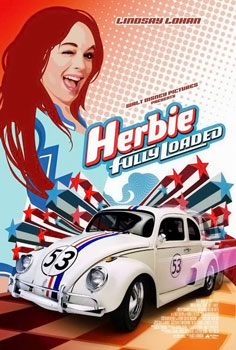
Herbie: Fully Loaded is a 2005 American sports comedy film directed by Angela Robinson from a screenplay by Thomas Lennon, Robert Ben Garant, Alfred Gough, and Miles Millar. The film is the sixth and final installment in the Herbie film series, following the television film The Love Bug (1997), and the first theatrical film since Herbie Goes Bananas (1980). It serves as a direct sequel to the previous films. The film stars Lindsay Lohan, Justin Long, Breckin Meyer, Matt Dillon, and Michael Keaton. It features cameos by many NASCAR drivers, including Jeff Gordon, Jimmie Johnson, Tony Stewart, and Dale Jarrett.

Fast Company is a 1979 Canadian action film directed by David Cronenberg and starring William Smith, John Saxon, Claudia Jennings and Nicholas Campbell. It was written by Phil Savath, Courtney Smith, Alan Treen and Cronenberg. It was primarily filmed at Edmonton International Speedway, in addition to other locations in Edmonton, Alberta, and Western Canada.
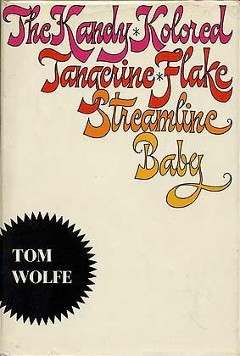
The Kandy-Kolored Tangerine-Flake Streamline Baby is the title of Tom Wolfe's first collected book of essays, published in 1965. The book is named for one of the stories in the collection that was originally published in Esquire magazine in 1963 under the title "There Goes That Kandy-Kolored (Thphhhhhh!) Tangerine-Flake Streamline Baby (Rahghhh!) Around the Bend (Brummmmmmmmmmmmmmm)…" Wolfe's essay for Esquire and this, his first book, are frequently hailed as early examples of New Journalism.
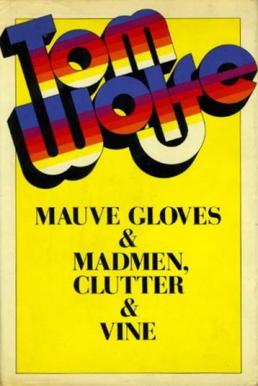
Mauve Gloves & Madmen, Clutter & Vine is a 1976 book by Tom Wolfe, consisting of eleven essays and one short story that Wolfe wrote between 1967 and 1976. It includes the essay in which he coined the term "the 'Me' Decade" to refer to the 1970s. In addition to the stories, Wolfe also illustrated the book.
William Ivey Blair was an American stock car racing driver in the 1940s and the 1950s, and he was one of the pioneers of NASCAR.
Carl D. "Lightning" Lloyd Seay was an early stock car racing driver from Georgia. NASCAR founder Bill France Sr. described Seay as the "best pure race driver I ever saw". He was shot to death by his cousin Woodrow Anderson over a moonshine operation. His last name was pronounced as "See".
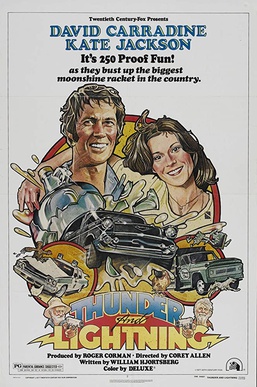
Thunder and Lightning is a 1977 action comedy film directed by Corey Allen, and starring David Carradine and Kate Jackson.
Roy Hall, known as "Rapid Roy" and "Reckless Roy", was a pioneering American stock car racing driver, who achieved success in the early days of the sport driving cars owned by Raymond Parks and prepared by Red Vogt. Hall was also involved in the moonshine trade in north Georgia in the 1930s and 1940s and would compete in three events in the NASCAR Strictly Stock Series shortly following its formation.
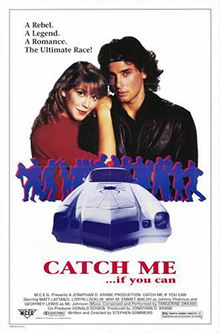
Catch Me If You Can is a 1989 American action comedy film starring Matt Lattanzi, Loryn Locklin, Grant Heslov, Geoffrey Lewis and M. Emmet Walsh. The film was the feature film directorial debut of writer and director Stephen Sommers, with a soundtrack by Tangerine Dream.

The 1961 Wilkes 200 was a NASCAR Grand National Series event that was held on October 1, 1961, at North Wilkesboro Speedway in North Wilkesboro, North Carolina.
The 1956 Buddy Shuman 250 was a NASCAR Grand National Series event that was held on November 11, 1956, at Hickory Speedway in Hickory, North Carolina.

Death Race 3: Inferno is a 2013 American science fiction action film directed by Roel Reiné. It is the third installment in the Death Race film series and takes place between the events of Death Race 2 (2010) and Death Race (2008). The film was released direct-to-video on January 22, 2013.

The 1958 Wilkes 160 was a NASCAR Grand National Series event that was held on October 19, 1958, at North Wilkesboro Speedway in North Wilkesboro, North Carolina.

The 1965 Wilkes 400 was a NASCAR Grand National Series event that was held on October 3, 1965, at North Wilkesboro Speedway in North Wilkesboro, North Carolina.

Death Race 2050 is a 2017 American political satire action direct-to-video film directed by G.J. Echternkamp, and starring Manu Bennett, Marci Miller and Malcolm McDowell. It is a sequel to the 1975 film Death Race 2000. Both films were produced by Roger Corman, who described the film as "a car-racing picture with some black humor."















